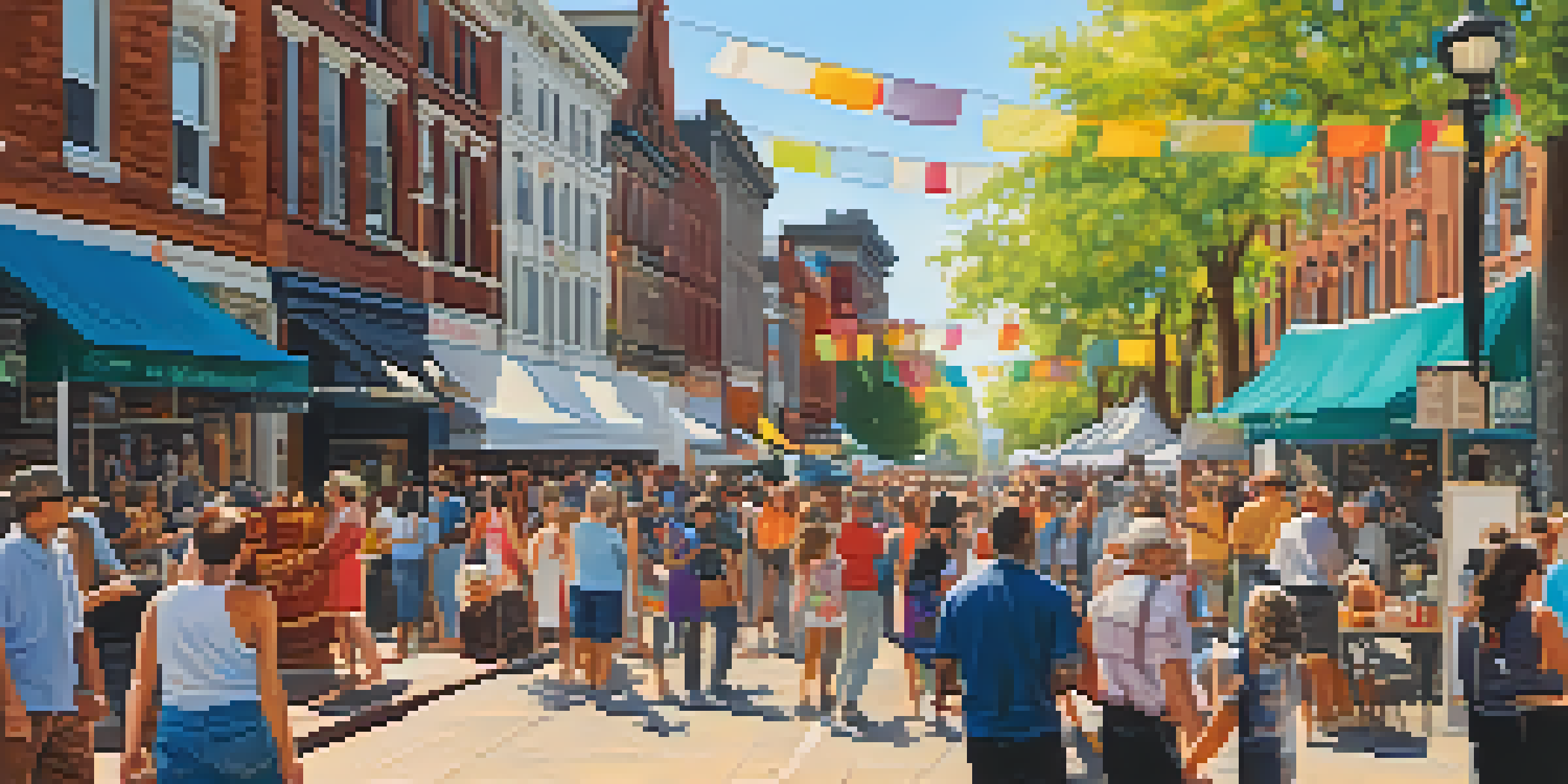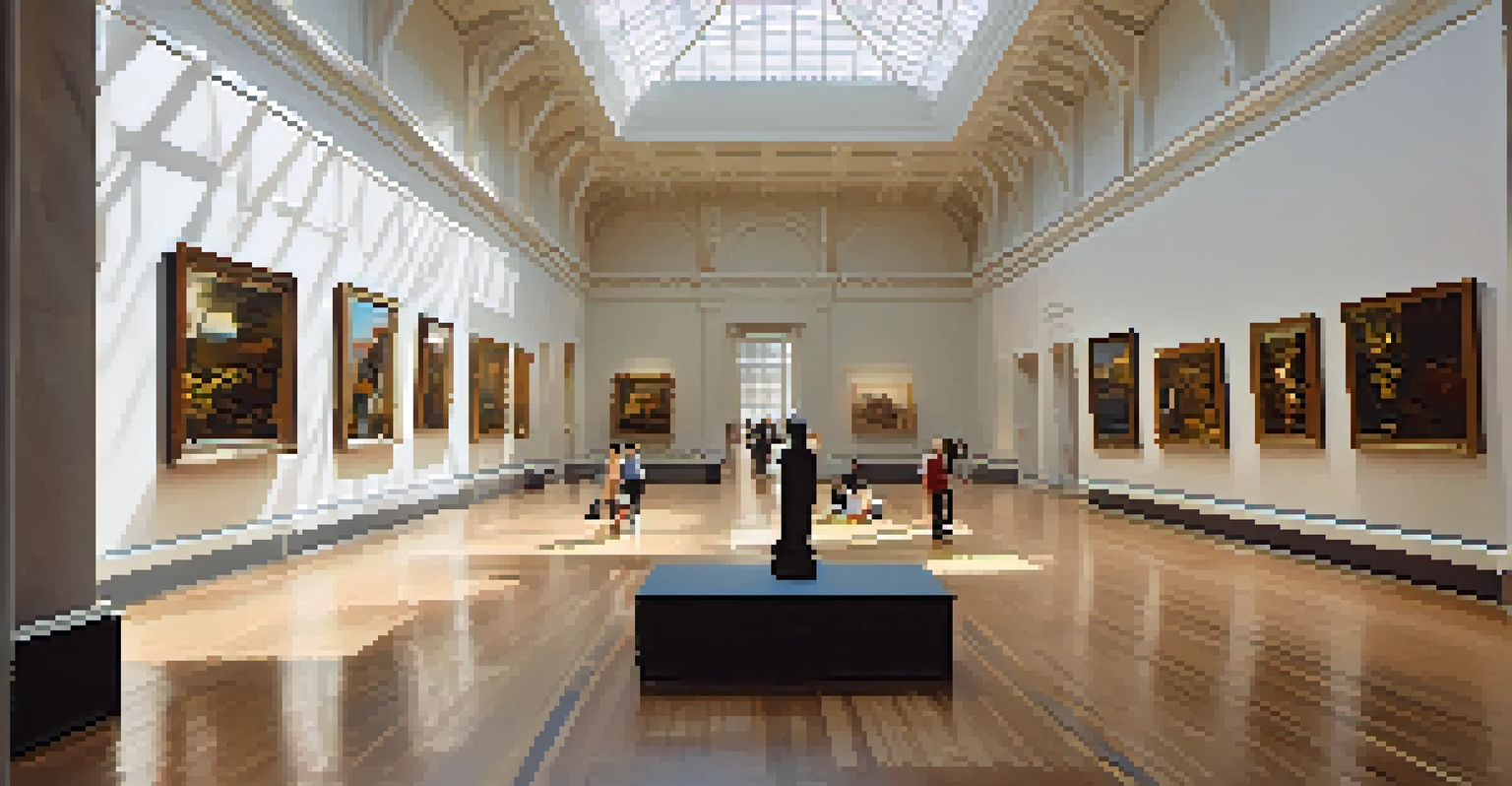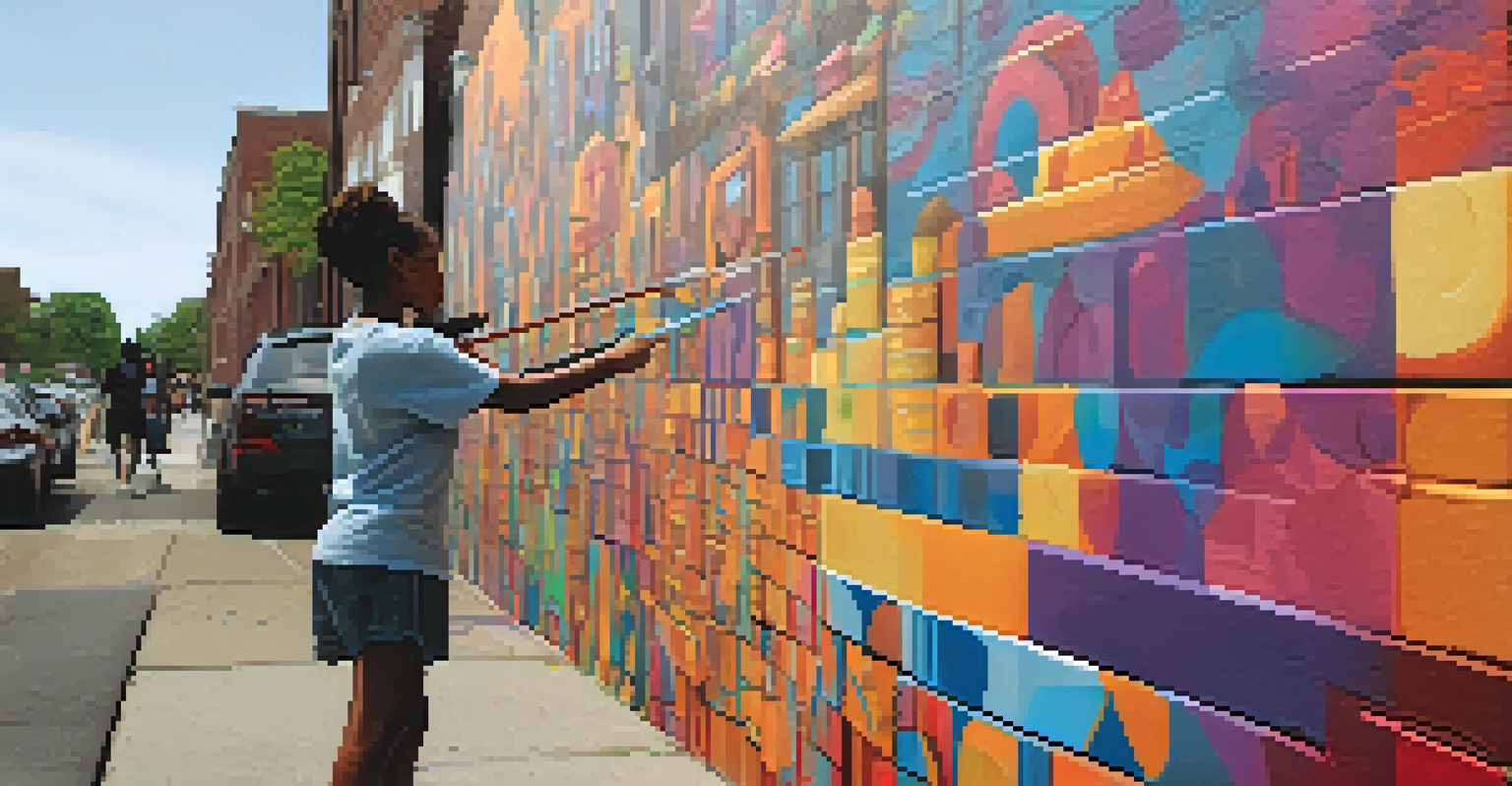Newark's Cultural Economy: Arts as a Driver of Growth

Understanding Newark's Cultural Economy and Its Importance
Newark's cultural economy is a dynamic sector where the arts play a vital role in shaping the community. This economy encompasses various creative industries, including visual arts, music, and theater, providing not just cultural enrichment but also economic opportunities. By prioritizing the arts, Newark enhances its appeal, attracting both residents and visitors alike.
The arts are not a luxury; they are an integral part of our community's economy and identity.
Arts and culture are increasingly recognized as essential components of urban development. They contribute to job creation, tourism, and local business support, effectively acting as a catalyst for growth. Newark's commitment to nurturing its cultural assets showcases how a thriving arts scene can lead to broader economic benefits.
Moreover, a vibrant cultural economy helps foster a sense of community identity and pride. As residents engage with local artists and cultural events, they build connections that strengthen the social fabric of Newark. This interconnectedness is key to sustainable growth and community well-being.
The Role of Arts Organizations in Newark's Growth
Arts organizations in Newark are the backbone of the city's cultural economy, serving as hubs for creativity and collaboration. Institutions like the Newark Museum of Art and the New Jersey Performing Arts Center not only host events but also provide educational programs that empower local artists. These organizations create a platform for diverse voices and expressions, enriching the city's cultural landscape.

By offering various programs and workshops, these arts organizations help nurture talent within the community. They provide resources and support for emerging artists, ensuring the continuity of Newark's vibrant cultural scene. This investment in local talent ultimately contributes to a more robust cultural economy.
Arts Drive Newark's Economic Growth
Newark's cultural economy thrives by integrating the arts into urban development, creating jobs and attracting tourism.
Furthermore, arts organizations often collaborate with businesses and local governments, creating partnerships that benefit the entire community. These collaborations can lead to festivals, public art projects, and other initiatives that draw attention and investment to Newark. In this way, arts organizations play a crucial role in driving both cultural and economic growth.
Impact of Arts on Local Businesses and Employment
The arts have a profound impact on local businesses, acting as a magnet for foot traffic and stimulating economic activity. When cultural events take place, nearby restaurants, shops, and hotels often see an increase in customers. This symbiotic relationship between the arts and local businesses is essential for Newark's overall economic health.
Creativity is the engine of economic growth, and the arts are its fuel.
Moreover, the creative industries generate a significant number of jobs, from artists to event planners and beyond. Employment in the arts sector contributes to a more diverse job market, offering opportunities for individuals with various skill sets. This diversification is beneficial for the economy, as it creates a more resilient workforce.
Additionally, local businesses often engage with the arts community through sponsorships and collaborations. This not only enhances their brand visibility but also demonstrates their commitment to supporting local culture. The resulting community ties can lead to loyal customer bases, further cementing the connection between arts and local business success.
Community Engagement Through Arts and Culture
Community engagement is a crucial aspect of Newark's cultural economy, with the arts serving as a unifying force. Local festivals, art exhibits, and performances create spaces where residents can come together to celebrate their shared heritage and experiences. These events foster a sense of belonging, making the arts an integral part of community life.
Moreover, arts programs often address social issues and promote dialogue among diverse groups. Through workshops and community projects, residents can express their perspectives and collaborate on creative solutions. This engagement not only empowers individuals but also strengthens community bonds.
Community Engagement through Arts
Local arts events foster a sense of belonging and unity among residents, strengthening community bonds.
In this way, the arts act as a bridge, connecting various segments of the population. By bringing people together, Newark's cultural economy nurtures understanding and respect among its residents, ultimately contributing to a more harmonious community.
Education and Arts: Building Future Generations
Education plays a pivotal role in sustaining Newark's cultural economy, particularly through arts education. Schools and community organizations offer programs that introduce young people to various art forms, fostering creativity and self-expression. This early exposure can inspire the next generation of artists and cultural leaders.
Additionally, integrating the arts into education enhances student engagement and academic performance. Research shows that students involved in arts programs tend to develop critical thinking skills and improved emotional well-being. By prioritizing arts education, Newark is investing in the holistic development of its youth.
Ultimately, nurturing a love for the arts in young people ensures the long-term vitality of Newark's cultural economy. Future generations will carry forward the rich traditions of their community while innovating and expanding upon them, creating a vibrant cultural landscape for all.
Challenges Facing Newark's Arts Community
Despite its growth, Newark's arts community faces several challenges that need addressing. Funding can be a significant obstacle for many local artists and organizations, often relying on grants and donations to sustain their programs. Economic fluctuations can impact these funding sources, making it difficult for the arts to thrive consistently.
Additionally, gentrification poses a threat to the cultural fabric of Newark. As neighborhoods evolve, long-standing artists and organizations may find themselves priced out, disrupting the community dynamics. Preserving affordable spaces for artists is crucial to maintaining the diversity and richness of Newark's cultural economy.
Future of Arts Depends on Collaboration
The growth of Newark's arts scene relies on strong partnerships among artists, organizations, and the community.
Lastly, public awareness and engagement remain essential for the arts to flourish. While there is a growing appreciation for the arts, continuous efforts are necessary to promote cultural events and initiatives. Building a strong support network within the community is vital to overcoming these challenges and ensuring a vibrant future for Newark's arts scene.
Future Prospects: The Road Ahead for Newark's Arts Scene
Looking ahead, the future of Newark's cultural economy appears promising with ongoing investments and community support. The city's commitment to revitalizing its arts scene is evident in various initiatives aimed at fostering creativity and collaboration. As new projects emerge, Newark is poised to become a cultural destination that attracts visitors and residents alike.
Moreover, the integration of technology in the arts offers exciting possibilities for innovation. Virtual galleries, online performances, and interactive art installations can expand outreach and engagement, allowing more people to connect with Newark's vibrant culture. Embracing these advancements will be essential for the arts to remain relevant in an ever-evolving landscape.

Ultimately, the continued growth of Newark's cultural economy hinges on collaboration among artists, organizations, and the community. By working together, they can create a supportive environment that nurtures creativity and fosters economic prosperity. With a shared vision, Newark's arts scene will undoubtedly flourish for years to come.